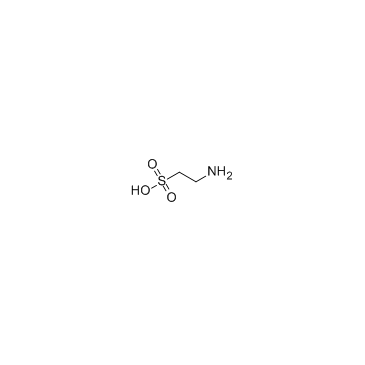Taurochenodeoxycholic acid
Modify Date: 2024-01-02 12:38:47

Taurochenodeoxycholic acid structure
|
Common Name | Taurochenodeoxycholic acid | ||
|---|---|---|---|---|
| CAS Number | 516-35-8 | Molecular Weight | 499.704 | |
| Density | 1.2±0.1 g/cm3 | Boiling Point | N/A | |
| Molecular Formula | C26H45NO6S | Melting Point | N/A | |
| MSDS | N/A | Flash Point | N/A | |
Use of Taurochenodeoxycholic acidTaurochenodeoxycholic acid is one of the main bioactive substances of animals' bile acid. |
| Name | taurochenodeoxycholic acid |
|---|---|
| Synonym | More Synonyms |
| Description | Taurochenodeoxycholic acid is one of the main bioactive substances of animals' bile acid. |
|---|---|
| Related Catalog | |
| Target |
Caspase TNF-α Human Endogenous Metabolite Apoptosis |
| In Vitro | Studies have suggested that taurochenodeoxycholic acid as a signaling molecule shows obvious anti-inflammatory and immune regulation properties. Taurochenodeoxycholic acid dramatically improves the apoptosis rate of NR8383 cells in a concentration-dependent manner. In the meantime, PKC mRNA levels and activities are significantly augmented by taurochenodeoxycholic acid treatments. In addition, JNK, caspase-3 and caspase-8 mRNA expression levels and activities are increased by taurochenodeoxycholic acid[1]. |
| In Vivo | Taurochenodeoxycholic acid in dosages of 0.05 and 0.1g/kg can decrease the pulmonary coefficient in the model mice, taurochenodeoxycholic acid in dosages of 0.05 and 0.1g/kg reduce the pathological damages on their lungs; it can decrease the expression levels of TNF-α and TIMP-2 in pulmonary tissues in the pulmonary fibrosis mice, the expression level of MMP-9 increases, while it has no significant effects on MMP2[2]. Taurochenodeoxycholic acid significantly normalizes the clinical inflammatory parameters, prevented indomethacin-induced increases in the biliary contents of secondary bile acids and hydrophobicity index, and tended to attenuate the intestinal inflammation[3]. Taurochenodeoxycholic acid significantly suppresses paw swelling and polyarthritis index, increases the loss body weight and index of thymus and spleen, and amends radiologic changes in AA rats. The overproduction and mRNA expression of TNF-α, IL-1β and IL-6 are remarkably suppressed in serum and synovium tissue of all TCDCA-treated rats[4]. |
| Animal Admin | Rats: Male Wistar rats are divided into six groups of ten each. Group 1 is normal rat (Sham), Group 2 received FCA only, Group 3 and Group 4 received FCA+Taurochenodeoxycholic acid (0.1 g/kg) and FCA+Taurochenodeoxycholic acid (0.2 g/kg), respectively, Groups 3 and 4 are treated beginning from day 0 of injection of FCA, Group 5 and Group 6 received FCA+Taurochenodeoxycholic acid (0.1 g/kg) and FCA+Taurochenodeoxycholic acid (0.2 g/kg), respectively, Group 5 and Group 6 are treated from 14 days after induction. All animals are treated with intragastrical administration and sacrificed after 28 days of induction[4]. |
| References |
| Density | 1.2±0.1 g/cm3 |
|---|---|
| Molecular Formula | C26H45NO6S |
| Molecular Weight | 499.704 |
| Exact Mass | 499.296753 |
| PSA | 132.31000 |
| LogP | 2.10 |
| Index of Refraction | 1.552 |
| Storage condition | -20°C |
| Precursor 2 | |
|---|---|
| DownStream 0 | |
| Chenyltaurine |
| 2-{[(3α,5β,7α,8ξ,9ξ,14ξ)-3,7-Dihydroxy-24-oxocholan-24-yl]amino}ethanesulfonic acid |
| Chenodeoxycholyltaurine |
| Chenodeoxytaurocholic acid |
| 12-Deoxycholyltaurine |
| Ethanesulfonic acid, 2-[[(3α,5β,7α,8ξ,9ξ,14ξ)-3,7-dihydroxy-24-oxocholan-24-yl]amino]- |
| Chenodeoxycholoyltaurine |
| [3H]-Chenodeoxycholyltaurine |
| Taurochenodeoxycholic acid |
| 12-Desoxycholyltaurine |
| Taurochenodesoxycholic acid |
 CAS#:35807-85-3
CAS#:35807-85-3 CAS#:107-35-7
CAS#:107-35-7
